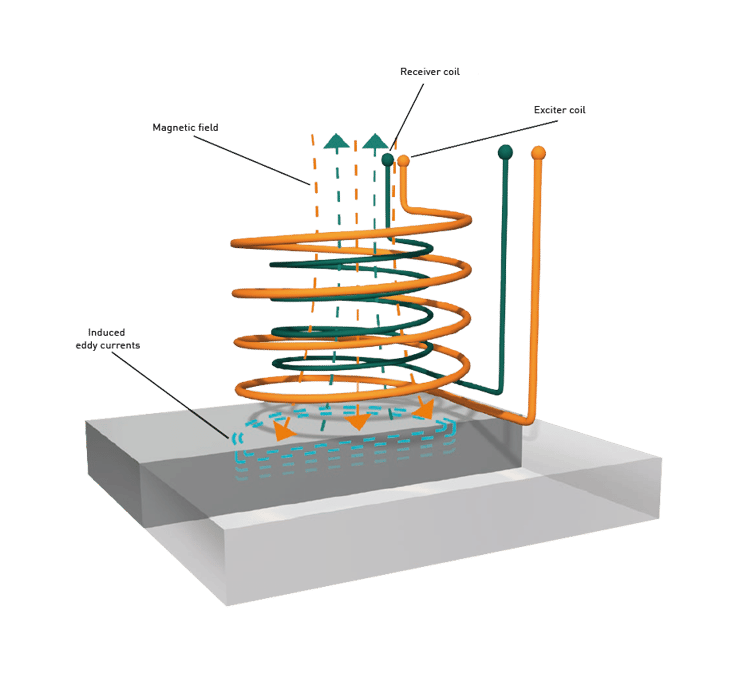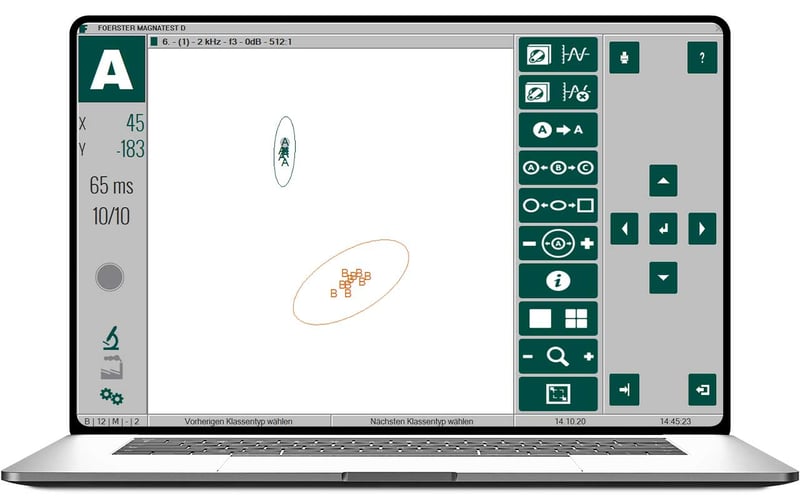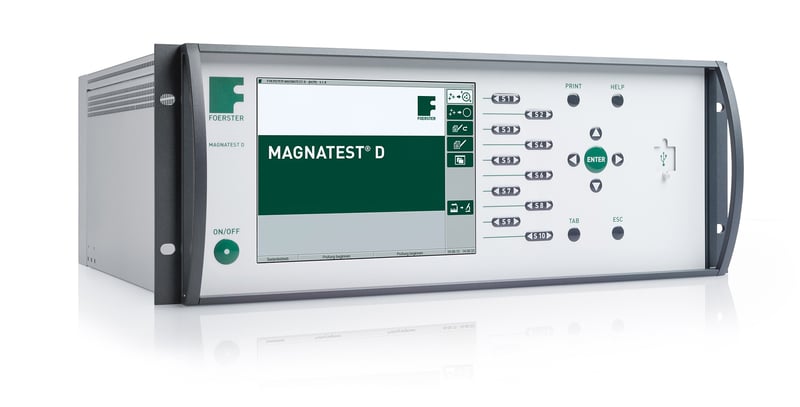Harmonic analysis - 4 points to consider for eddy current testing
In order to achieve high test sensitivity in in-process magnetic induction testing, the test parameters such as test frequency and excitation field strength must be optimized. The test parameters not only have a significant influence on the test, but also disturbance effects must be considered, which are caused e.g. by the manufacturing process. In the following blog post, we will discuss these interference effects in more detail.
What are the interference effects in magnetic induction eddy current testing?
| 1. Temperature differences of the test parts |
| 2. Geometric tolerances of the test parts |
| 3. Undefined test positioning |
| 4. Batch effects |
Temperature influence
Different temperatures, as well as different positioning within the test coil, have a significant influence on the eddy current characteristics amplitude and phase position. The increased dispersion leads to the fact that a clear separation of the two states is only possible to a limited extent. In the case described, the electrical characteristics of a test part are changed because of the temperature influence. This disturbing influence overlaps the test results to such an extent that it is no longer possible to separate the different component states with sufficient test reliability. For series production, the influence of critical disturbance effects must therefore always be considered when selecting parameters.
Important Reading: What you need to know about Eddy Current Testing!

The influence of changing component temperatures is an especially significant disturbing effect in many industrial applications of magnetic inductive testing. So how can the influence of the electrical parameters be specifically suppressed so that only the magnetic parameters can be considered in the signal evaluation?
The answer to this question is the so-called harmonic analysis, which can be used for all ferromagnetic materials.
The evaluation of eddy current signals (harmonic analysis)

The basis for harmonic analysis is the so-called hysteresis curve of the respective material state. Each material state has a typical hysteresis curve in terms of size, steepness and shape. Characteristic curves result both for the static case and for a dynamic alternating field application, which can be evaluated specifically according to their characteristics such as saturation magnetization, remanence, coercivity or watt losses. The information about the material condition contained in the hysteresis curve can be determined in a comparable form with magnetic induction testing. In this case, very strong magnetic fields must be excited via the eddy current coil in order to be able to record the entire information of the hysteresis curve. The magnetic field of the coil is proportional to the coil current.

Fig.2: Hysteresis Curve
With a strong sinusoidal magnetic field excitation, the received signal, i.e. the magnetic flux, results from a reflection of the transmitted signal on the hysteresis curve. Due to the mirroring, the received signal is no longer sinusoidal. It is "distorted or individually shaped" by the non-linear form of the present hysteresis curve. It is precisely this non-sinusoidal distortion of the received signal that forms the basis for the information on the present material condition.
The desired information can now be developed via a Fourier decomposition of the received signal of the magnetic inductive test. Only odd-numbered multiples of the fundamental wave (frequency of the transmitted signal) can occur. These odd-numbered multiples of the excited fundamental frequency are called harmonics. They completely describe the "distortion" of the received signal and consequently contain all information about the magnetic properties (hysteresis curve) of the present material state. By evaluating the harmonics, you thus obtain the information contained in the hysteresis curve about the material state of each ferromagnetic component. Since this is a magnetic characteristic value, electrical influencing variables such as component tolerances, positioning effects and, in particular, temperature fluctuations of the test parts change the test results only very slightly. Therefore, in contrast to fundamental wave evaluation, harmonic evaluation is very stable against the following interference effects in practical use:
- Low temperature influence
- Low influence of positioning
- Low influence of component tolerances
Batch effects have much less influence on the hysteresis curve than microstructural changes such as hardening. Therefore, in a harmonic analysis for describing hardness or strength, the batch influence is largely suppressed.
This makes harmonic analysis a form of evaluation that is resistant to interfering influences. It enables a reliable description of the microstructural changes and the mechanical-technological values to be derived from them.
FOERSTER produces outstanding products for performant harmonic wave evaluations during structure testing
FOERSTER’s MAGNATEST D features sophisticated evaluation electronic equipment which shows even the smallest differences in structure. The high-performance amplifier installed in MAGNATEST test instruments makes it possible to analyze harmonics, which guarantees an extremely reliable and precise repetition, even when impacted by perturbations.
Please feel free to contact our experts and discuss your testing tasks. We are glad to help you!
Share this
You May Also Like
These Related Stories

Crack testing: How does an eddy current test instrument work?

Eddy Current Instruments: advantages, applications, and capabilities for defects detection



